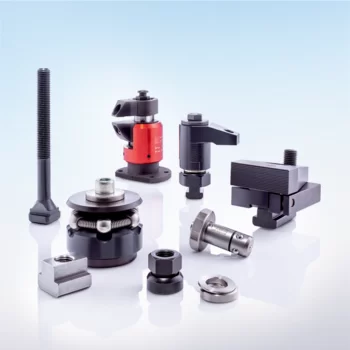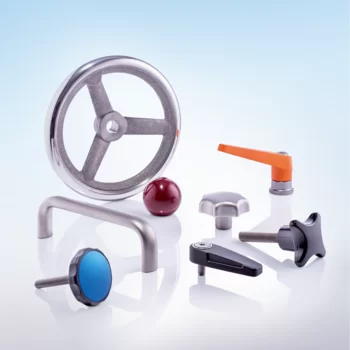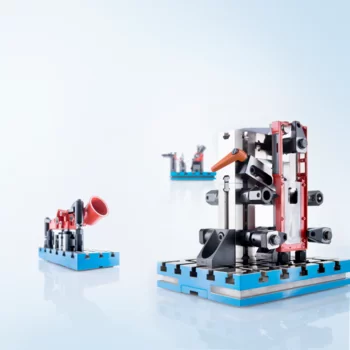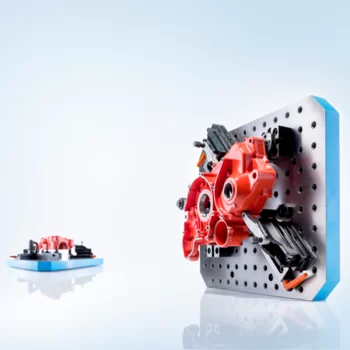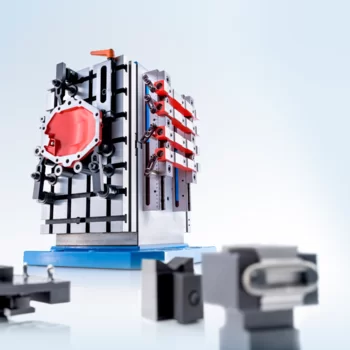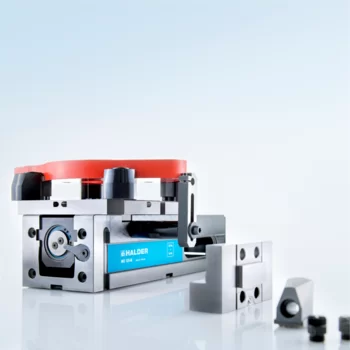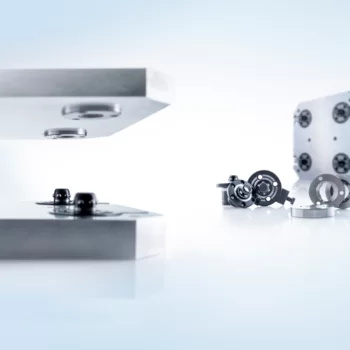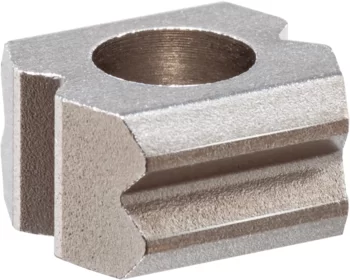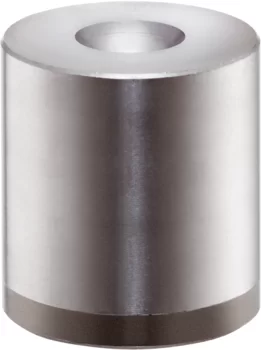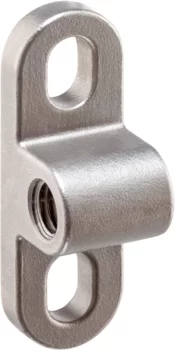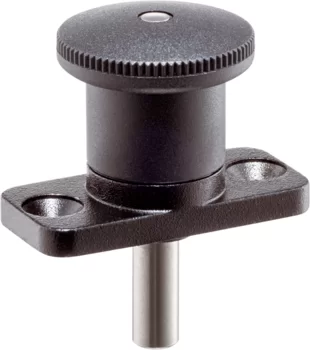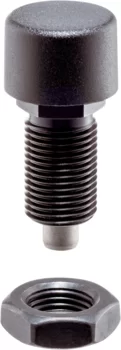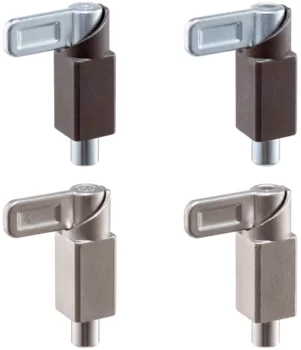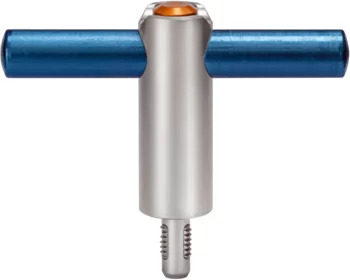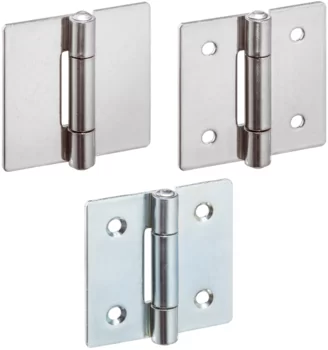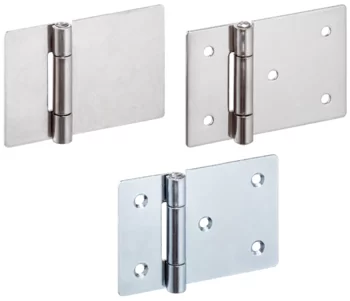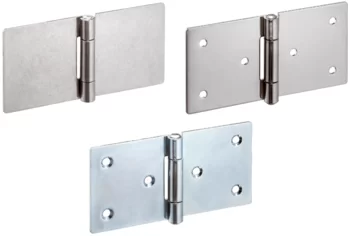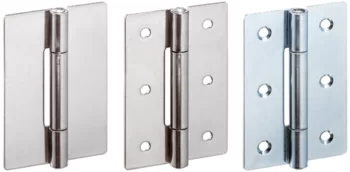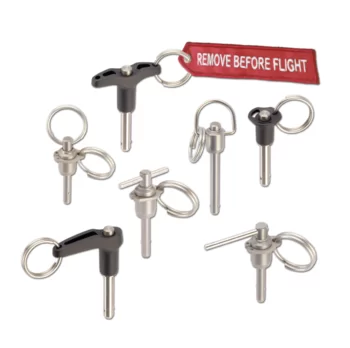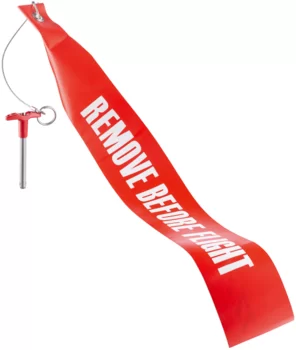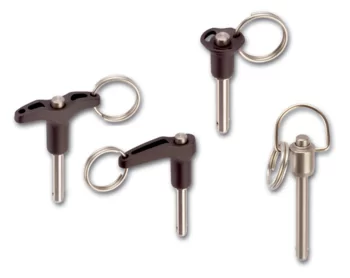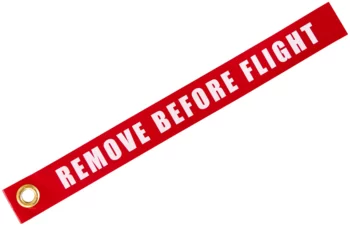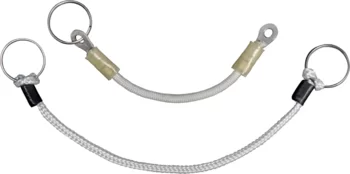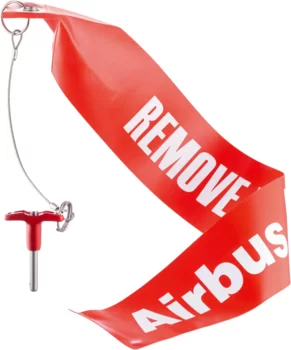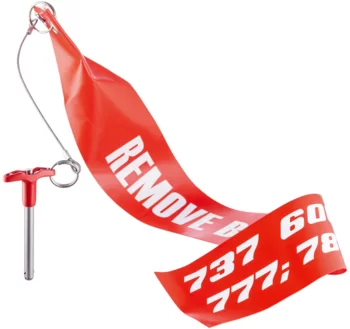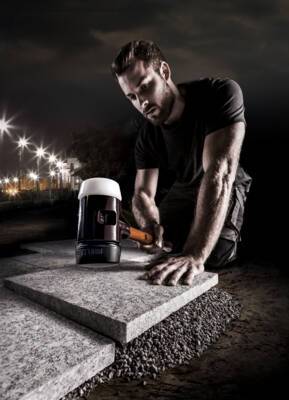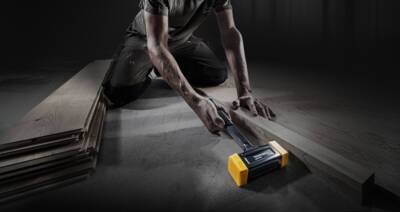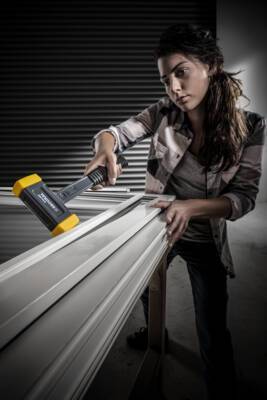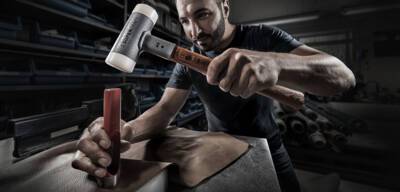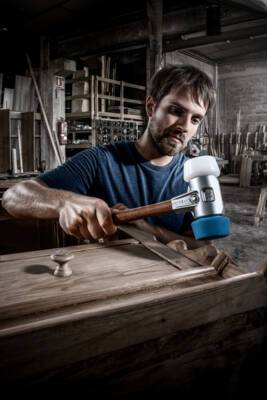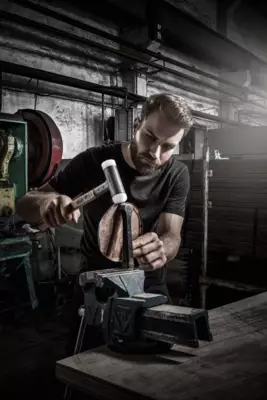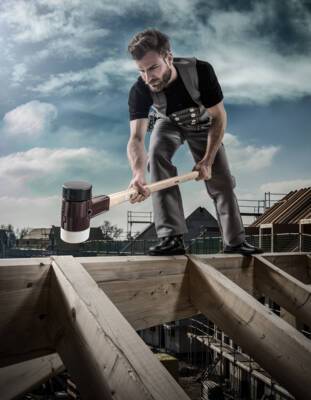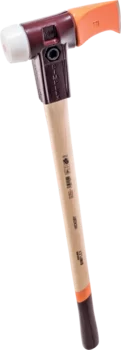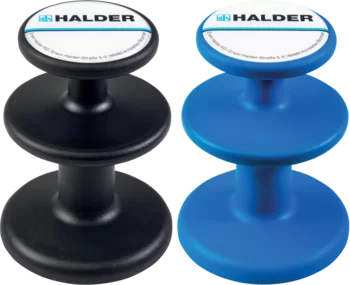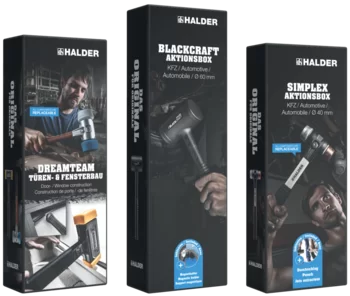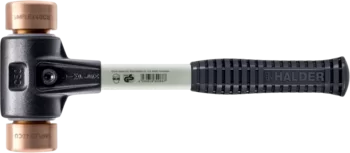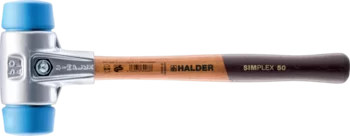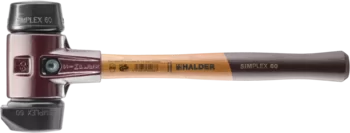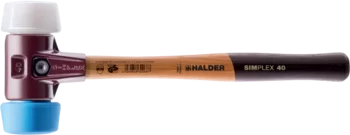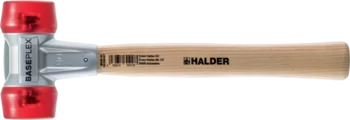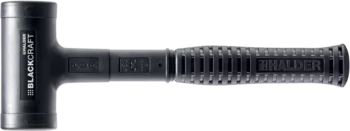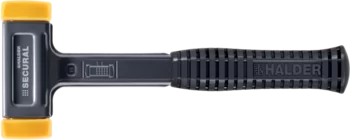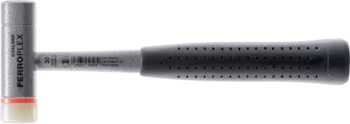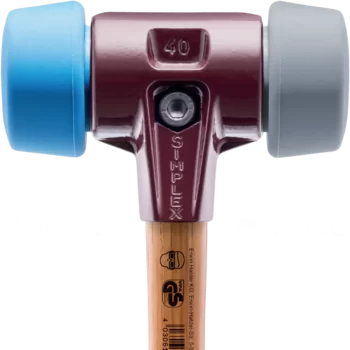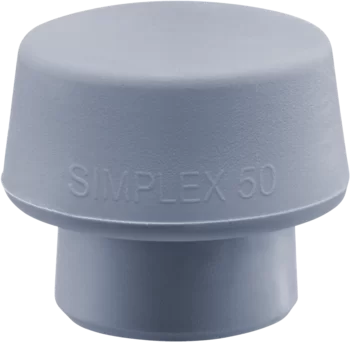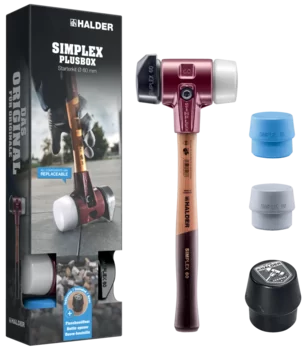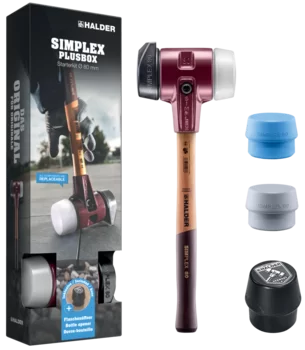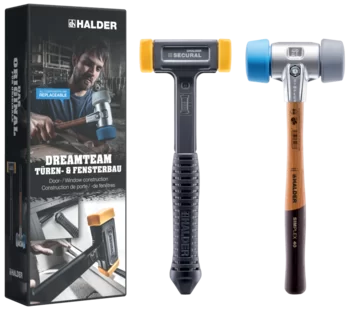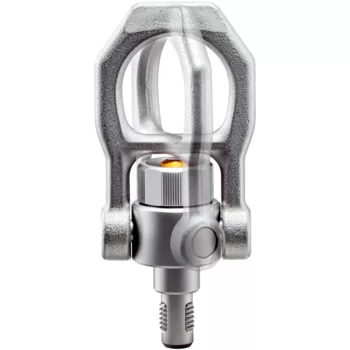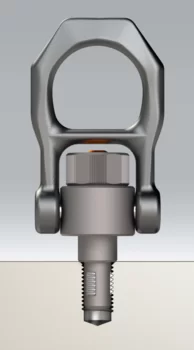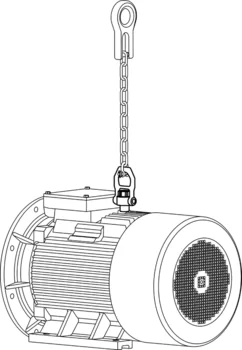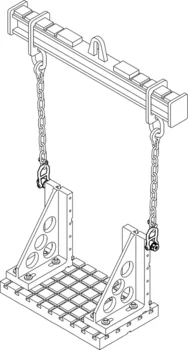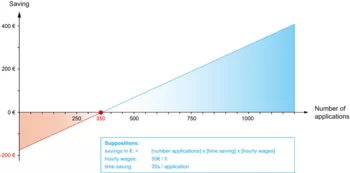Threaded Lifting Pins self-locking, with rotatable shackle - INCH
EH 2B353.
Heavy-duty lifting element for quick and easy use, with moveable, rotatable shackle and locking stud to provide protection against unintentional unlocking. For lifting loads, the threaded lifting pin is inserted into a threaded hole. In contrast to a ringbolt, time-consuming screwing in and out is therefore unnecessary. The rotatable shackle will always align with the tensile direction of pull without the pin rotating. This prevents the lifting device from being turned out of the thread and the component can be lifted safely.
All versions are corrosion-protected. The version made of stainless steel is also resistant to corrosion and weathering, so it is also suitable for external use. In addition, the high-strength, precipitation-hardened pin makes extreme loads possible.


Your selection resulted in 6 hits
More details

- Heat-treated steel
- d1: 1/2-13
- l1: 0.669 in
- d2 +0.0028: 0.416 in
- d3: 0.787 in
- d4: 1.496 in
- d5: 1.319 in
- l2: 0.945 in
- l3: 1.012 in
- l4: 2.161 in
- l5: 1.673 in
- l6: 1.811 in
- l7: 2.677 in
- l8: 4.87 in
- l9: 1.496 in
- l10: 0.472 in
- Load capacity according to DIN EN 13155 F1: 1528 lbf
- Load capacity according to DIN EN 13155 F2: 764 lbf
- Load capacity according to DIN EN 13155 F3: 607 lbf
- Locating thread: 1/2-13
- "Operating temperature range": 482 °F
- Tightening torque max.: 1.48 lbf ft
- Weight: 24.601 oz


- Heat-treated steel
- d1: 3/4-10
- l1: 0.866 in
- d2 +0.0028: 0.64 in
- d3: 1.378 in
- d4: 2.323 in
- d5: 1.969 in
- l2: 1.181 in
- l3: 1.437 in
- l4: 2.902 in
- l5: 2.189 in
- l6: 2.756 in
- l7: 4.016 in
- l8: 6.594 in
- l9: 2.323 in
- l10: 0.669 in
- Load capacity according to DIN EN 13155 F1: 3619 lbf
- Load capacity according to DIN EN 13155 F2: 1731 lbf
- Load capacity according to DIN EN 13155 F3: 1124 lbf
- Locating thread: 3/4-10
- "Operating temperature range": 482 °F
- Tightening torque max.: 2.21 lbf ft
- Weight: 64.973 oz


- Heat-treated steel
- d1: 1-8
- l1: 1.063 in
- d2 +0.0028: 0.863 in
- d3: 1.378 in
- d4: 2.323 in
- d5: 1.969 in
- l2: 1.417 in
- l3: 1.654 in
- l4: 3.118 in
- l5: 2.189 in
- l6: 2.756 in
- l7: 4.016 in
- l8: 6.811 in
- l9: 2.323 in
- l10: 0.866 in
- Load capacity according to DIN EN 13155 F1: 4159 lbf
- Load capacity according to DIN EN 13155 F2: 3147 lbf
- Load capacity according to DIN EN 13155 F3: 2225 lbf
- Locating thread: 1-8
- "Operating temperature range"1): 482 °F
- Tightening torque max.: 2.21 lbf ft
- Weight: 67.529 oz

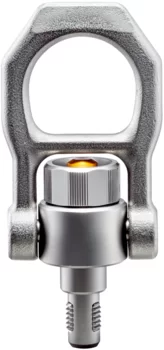
- Stainless steel
- d1: 1/2-13
- l1: 0.669 in
- d2 +0.0028: 0.416 in
- d3: 0.787 in
- d4: 1.496 in
- d5: 1.319 in
- l2: 0.945 in
- l3: 1.012 in
- l4: 2.161 in
- l5: 1.673 in
- l6: 1.811 in
- l7: 2.677 in
- l8: 4.87 in
- l9: 1.496 in
- l10: 0.472 in
- Load capacity according to DIN EN 13155 F1: 1528 lbf
- Load capacity according to DIN EN 13155 F2: 764 lbf
- Load capacity according to DIN EN 13155 F3: 607 lbf
- Locating thread: 1/2-13
- "Operating temperature range": 482 °F
- Tightening torque max.: 1.48 lbf ft
- Weight: 24.601 oz


- Stainless steel
- d1: 3/4-10
- l1: 0.866 in
- d2 +0.0028: 0.64 in
- d3: 1.378 in
- d4: 2.323 in
- d5: 1.969 in
- l2: 1.181 in
- l3: 1.437 in
- l4: 2.902 in
- l5: 2.189 in
- l6: 2.756 in
- l7: 4.016 in
- l8: 6.594 in
- l9: 2.323 in
- l10: 0.669 in
- Load capacity according to DIN EN 13155 F1: 3619 lbf
- Load capacity according to DIN EN 13155 F2: 1731 lbf
- Load capacity according to DIN EN 13155 F3: 1124 lbf
- Locating thread: 3/4-10
- "Operating temperature range": 482 °F
- Tightening torque max.: 2.21 lbf ft
- Weight: 64.973 oz


- Stainless steel
- d1: 1-8
- l1: 1.063 in
- d2 +0.0028: 0.863 in
- d3: 1.378 in
- d4: 2.323 in
- d5: 1.969 in
- l2: 1.417 in
- l3: 1.654 in
- l4: 3.118 in
- l5: 2.189 in
- l6: 2.756 in
- l7: 4.016 in
- l8: 6.811 in
- l9: 2.323 in
- l10: 0.866 in
- Load capacity according to DIN EN 13155 F1: 4046 lbf
- Load capacity according to DIN EN 13155 F2: 3147 lbf
- Load capacity according to DIN EN 13155 F3: 2225 lbf
- Locating thread: 1-8
- "Operating temperature range"1): 482 °F
- Tightening torque max.: 2.21 lbf ft
- Weight: 67.529 oz

Material
Pin part
- Heat-treated steel, tempered, manganese phosphated
- Stainless steel 1.4542, precipitation-hardened
Press button
- Aluminium, orange, anodised
Threaded element
- Stainless steel 1.4542, precipitation-hardened
Shackle
- Heat-treated steel, tempered, manganese phosphated
- Stainless steel 1.4571
Spring
- Stainless Steel
Notes
- This product is manufactured in INCH dimensions.
Assembly
Threaded lifting pins can be mounted into a thread that is true to gauge.
Mounting:
- Press in the button and hold it down.
- Insert the threaded lifting pin.
- Release the button (The button must be back in its original position.).
- Tighten the threaded lifting pin by hand, until it bears compleately on the bearing surface.
- It must be ensured that the threaded segments are engaged in the mounting thread.
Dismantling:
- Unscrew the threaded lifting pin approx. a quarter of a turn anticlockwise.
- Press in the button and hold it down.
- Remove the threaded lifting pin.
- Release the button.
Operation
Each threaded lifting pin contains an instruction manual with an EC Declaration of Conformity.
Further products
RoHS compliant
Contains lead - compliant according to exceptions 6a / 6b / 6c.
Contains SVHC substances >0,1% w/w
Contains lead - SVHC list [REACH] as of 27.06.2024.
Contains Proposition 65 substances

Lead can cause cancer and reproductive harm from exposure
https://www.P65Warnings.ca.gov/
Free from Conflict Minerals
This product does not contain any substances designated as "conflict minerals" such as tantalum, tin, gold or tungsten from the Democratic Republic of Congo or adjacent countries.
What is the function of threaded lifting pins and in which industry are they used?
Any components, machines and workpieces with an existing thread can be lifted or secured directly via the thread. The threaded lifting pins are used in almost all industries, e.g. in mechanical engineering, electrical industry, fixture construction and assembly.
What is the difference between lifting pins and threaded lifting pins?
The lifting pins can be mounted very quickly in existing bores with undercut.
Components that already have an existing thread can be moved or lifted with the threaded lifting pin by inserting the threaded lifting pin into the threaded hole.
Previously used eyebolts can be replaced with the Halder threaded lifting pin without any problems or mechanical changes to the component - please refer to the load specifications in the catalogue.
What is the advantage of the threaded lifting pin compared to eyebolts?
Eyebolts are cheaper, but they remain on the parts to be moved. In the long run, this is very noticeable in the price. It takes time to tighten the eyebolts. In comparison, the threaded lifting pins are inserted into the thread and locked "in one go" by pressing the actuating button. For this reason, the threaded lifting pin is amortised after approx. 350 applications.
What must be considered when mounting the threaded lifting pins?
As this is a TÜV-certified load handling device with CE labelling, the operating instructions must be observed. The threaded lifting pin must always be inserted completely into the thread. In addition, functional safety is ensured by turning it slightly by hand until it reaches the thread stop.
In which thread sizes is the threaded lifting pin available?
In sizes M8, M10, M12, M16, M20, M24, M27, M30 as well as 1/2", 3/4" and 1".
What is the maximum axial load to which the threaded lifting pins may be subjected?
The maximum load capacity varies with the version used. The values - tested in accordance with DIN EN 13155 - range from 2.1 kN (M8) to 42.3 kN (M30). The values range lower for a diagonal pull / tensile direction of 90° - see product data table.
Are customized designs also possible for threaded lifting pins?
Yes, customized designs are possible. However, since thread segments are required for each thread size in the case of the threaded lifting pins, only the existing thread sizes can be offered at the moment. Changes to the geometry can be made up to a certain point. Please send us your enquiry if required.
What has to be considered for a customized design of a threaded lifting pin?
As the customized designs are only similar to the standard versions, TÜV approval is not applicable.
If the deviation from the standard version is only minimal, CE labelling may be possible. In this way, the customised part also receives a load capacity specification based on the equivalent standard part.
Starting from which number of pieces can a special geometry be produced for the threaded lifting pins?
An economic offer can be provided for a minimum of 10 pieces. Please feel free to send us your enquiry if required.
What is the difference between the TÜV certificate and the CE labelling for ball lock and threaded lifting pins?
As the threaded lifting and ball lock pins are a load handling device and therefore fall within the machinery directive 2006/42/EC, CE labelling is compulsory. The CE labelling includes, among other things, that a maximum lifting capacity of the ball lock / threaded lifting pin is specified. This information is determined by internal calculations and tests. The ball lock / threaded lifting pin is only approved by the TÜV if these values have also been tested and approved by the TÜV. Special designs are only manufactured as special pins without CE labelling and thus without specification of the lifting capacity, as no tests and calculations are usually carried out for these. If applicable, a CE labelling can be issued if the ball lock / threaded lifting pin is similar to a standard lifting pin and its load data can be used as a reference. A TÜV certificate must be specially ordered from the TÜV for each size for testing and is associated with additional costs. Please send us your enquiry if required.
Does the information on the threaded lifting pins indicate the production lot?
Yes, in addition to the annual production date, the Batch number BA is also indicated on the lifting pin.
Of what materials are the threaded lifting pins made?
There is a version made of heat-treated steel, tempered and manganese phosphated and a version made of stainless steel 1.4542 precipitation-hardened, depending on the application. For load values see product data chart.
What is the lifetime of a threaded lifting pin?
This cannot be answered in a general way, as it always depends on the application and the surrounding conditions. If a threaded lifting pin is damaged, e.g. if it is cracked or deformed, it must be removed from use immediately. This visual and functional check must be carried out before each use. Furthermore, the threaded lifting pin must be subjected to a safety check once a year with a visual and functional check by a qualified person.

